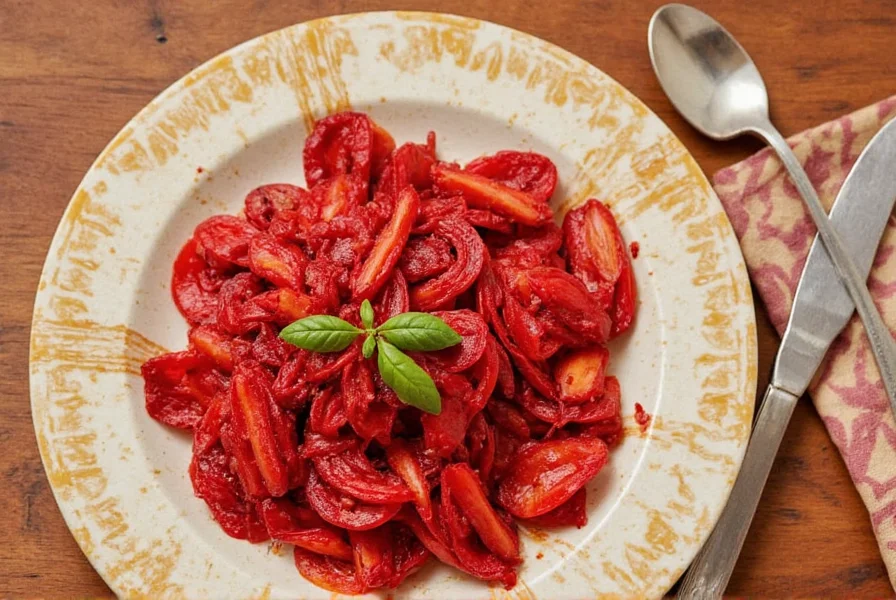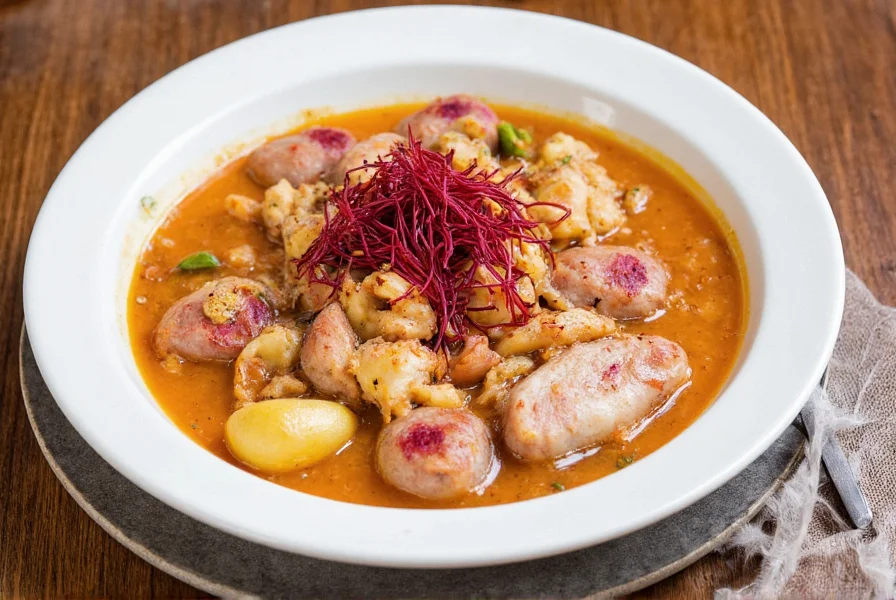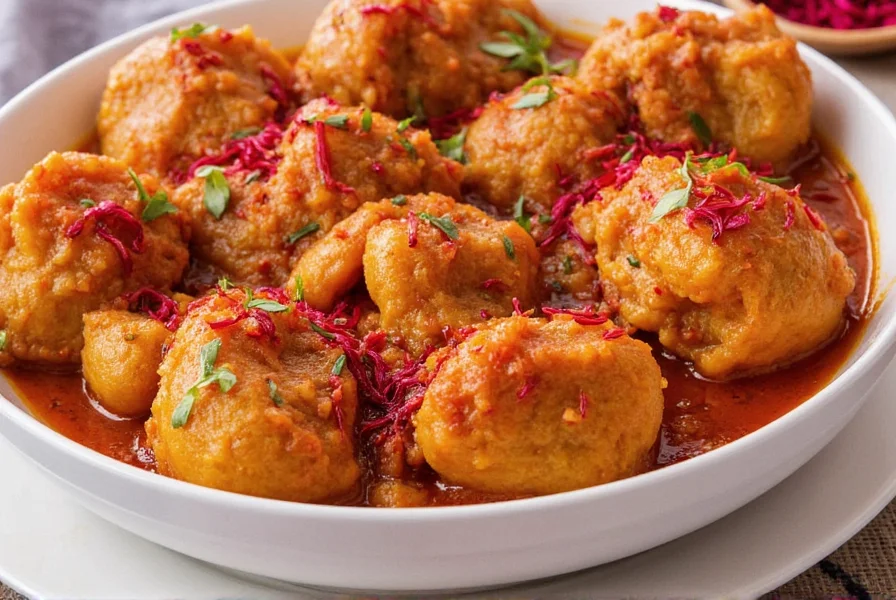Saffron's unique flavor profile—earthy, floral, and subtly sweet—has made it a prized ingredient across civilizations for millennia. Harvested from the delicate stigmas of Crocus sativus flowers, genuine saffron requires approximately 75,000 blossoms to produce just one pound of dried spice. This labor-intensive process explains its premium cost, but a little goes a long way in creating extraordinary dishes.
The Global Journey of Saffron in Cuisine
Tracing saffron's culinary history reveals its significance across diverse cultures. Ancient Persians used it in rice dishes around 500 BCE, while Spanish Moors introduced it to the Iberian Peninsula during medieval times. In India, Mughal emperors incorporated saffron into royal cuisine, creating elaborate biryanis and sweets. Each culture developed distinctive saffron dishes that remain integral to their culinary identity today.
Traditional Saffron Dishes by Region
Understanding regional saffron specialties helps home cooks appreciate proper saffron usage techniques. The following table highlights signature dishes where saffron plays a starring role:
| Region | Signature Dish | Saffron Application | Key Flavor Pairings |
|---|---|---|---|
| Spain | Paella Valenciana | Soaked in warm broth before adding to rice | Saffron, garlic, paprika, rosemary |
| Italy | Risotto alla Milanese | Bloomed in warm bone broth | Saffron, beef marrow, Parmesan |
| Persia | Tahdig with Saffron Rice | Mixed with sugar water for golden crust | Saffron, barberries, almonds, orange zest |
| India | Kashmiri Biryani | Layered between rice and meat | Saffron, cardamom, cloves, rose water |
| France | Bouillabaisse | Infused in fish stock | Saffron, fennel, orange zest, garlic |
Mastering Saffron in Your Kitchen
Authentic saffron recipes require proper technique to maximize flavor. Always purchase saffron threads rather than powder to ensure quality—powders often contain fillers. For optimal results, follow these professional tips:
- Proper blooming: Crush 10-15 threads and steep in 2-3 tablespoons of warm liquid (broth, water, or milk) for 15-20 minutes before adding to your dish
- Temperature control: Add saffron toward the end of cooking to preserve volatile compounds
- Quantity guidance: Use 0.05-0.1 grams per serving (about 10-20 threads) for balanced flavor
- Storage: Keep in an airtight container away from light; properly stored saffron maintains potency for 2-3 years

Avoiding Common Saffron Mistakes
Many home cooks make critical errors when preparing saffron dishes. Using excessive amounts creates bitterness rather than enhancing flavor. Adding saffron directly to dry ingredients prevents proper extraction of compounds. Cooking saffron at high temperatures for extended periods destroys delicate aromatics. Understanding these pitfalls ensures your traditional saffron dishes achieve restaurant-quality results.
Modern Interpretations of Classic Saffron Dishes
Contemporary chefs creatively reinterpret authentic saffron recipes while respecting traditional techniques. Saffron-infused desserts like panna cotta and crème brûlée showcase the spice's versatility beyond savory applications. Innovative chefs incorporate saffron into unexpected dishes like saffron honey roasted vegetables or saffron-scented cocktails. These modern saffron dishes maintain respect for the spice's heritage while exploring new culinary possibilities.

Selecting Quality Saffron
Not all saffron delivers the same quality experience. Genuine saffron threads should appear deep red with orange tips, never uniformly red or dark purple. When soaked in warm water, they release a golden-yellow color—not instant red dye. The aroma should be distinctly floral and honey-like, not musty or metallic. Reputable sources include Spanish La Mancha, Iranian Super Negin, and Kashmiri Mongra varieties. Understanding saffron quality indicators prevents disappointment in your saffron dishes.
Conclusion: Elevating Your Culinary Repertoire
Mastering saffron dishes connects modern cooks with centuries of culinary tradition. By understanding proper saffron usage techniques and respecting regional specialties, home chefs can create authentic saffron recipes that showcase this precious spice's unique qualities. Whether preparing classic Spanish paella or experimenting with contemporary saffron applications, attention to detail transforms ordinary meals into extraordinary culinary experiences. The investment in quality saffron pays dividends in dishes that delight the senses and honor global culinary heritage.
Frequently Asked Questions
What are the most authentic saffron dishes from Mediterranean cuisine?
The most authentic Mediterranean saffron dishes include Spanish paella Valenciana, Italian risotto alla Milanese, and French bouillabaisse. Each dish showcases regional variations in saffron usage—Spanish cuisine typically combines saffron with paprika and garlic, Italian preparations pair it with bone marrow and Parmesan, while French bouillabaisse features saffron with fennel and orange zest. These traditional saffron dishes have been perfected over centuries and represent the pinnacle of Mediterranean culinary artistry.
How much saffron should I use for traditional saffron rice dishes?
For traditional saffron rice dishes like Persian tahdig or Spanish paella, use 10-15 threads per serving (approximately 0.05-0.1 grams). Professional chefs recommend blooming the threads in 2-3 tablespoons of warm liquid for 15-20 minutes before incorporating into the rice. This extraction method ensures maximum flavor release without bitterness. Remember that high-quality saffron requires minimal quantity—using too much creates an overpowering, bitter taste that ruins authentic saffron recipes.
Can I substitute saffron in traditional dishes?
While turmeric or safflower can mimic saffron's golden color, they cannot replicate its distinctive flavor profile in traditional saffron dishes. These substitutes lack saffron's complex floral notes and subtle sweetness. For authentic saffron recipes, substitution compromises the dish's integrity. If saffron is unavailable, consider preparing dishes that don't rely on its unique characteristics rather than using inferior alternatives. Genuine saffron's value lies in its irreplaceable contribution to signature dishes like risotto alla Milanese and Persian jeweled rice.
How do I store saffron to maintain freshness for cooking?
Store saffron threads in an airtight container away from light, heat, and moisture to maintain freshness. A dark cupboard or refrigerator works well, but avoid freezing as temperature fluctuations cause condensation. Properly stored saffron retains potency for 2-3 years. Never store saffron in clear containers or near strong-smelling spices, as it readily absorbs surrounding odors. For best results in saffron dishes, purchase small quantities from reputable sources and use within 18 months for optimal flavor in authentic saffron recipes.











 浙公网安备
33010002000092号
浙公网安备
33010002000092号 浙B2-20120091-4
浙B2-20120091-4